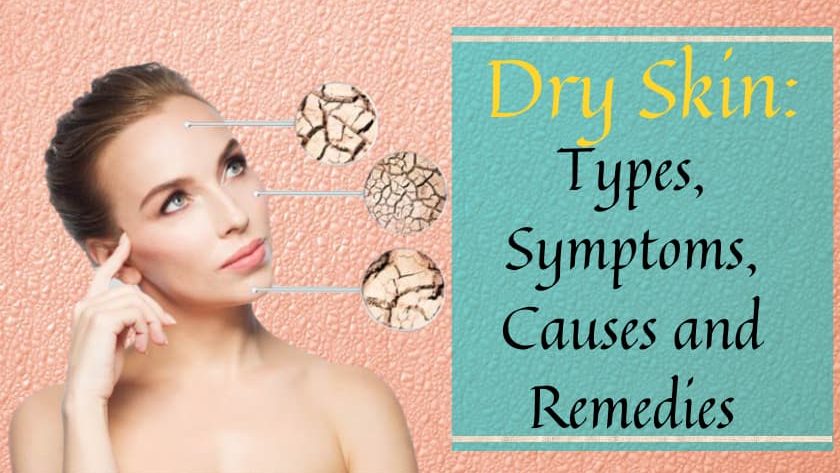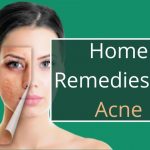Dry skin is a condition in which the outermost layer of the skin, the epidermis, fails to retain water or moisture naturally. The epidermis is made of lipid (fat) and protein. The causes of dry skin are varied – it may occur in people with oily skin as well from time to time.
Dry skin causes can be internal or external. External causes include low temperature and low humidity. Internal factors include overall health, age, genetics, family history, and a personal history of medical conditions like atopic dermatitis. Those with certain thyroid diseases are especially prone to developing dry skin.
What you should know about dry skin?
While dry skin is likely to affect males and females equally, individuals who are older of age are typically more prone to dry skin. Skin in older individuals tends to have paltry amounts of natural skin oils and lubricants. Areas such as the arms, hands, and lower legs tend are affected more by dry skin. Environmental factors, such as humidity and temperature, have a profound effect on the amount of water retained by the skin. For example, cold, dry air, when heated will produce dry skin by evaporating moisture on the skin. Frequent hand-washing and sanitizers can cause dryness.
If you experience occasional dry skin, you can treat it using simple lifestyle changes and over-the-counter moisturizers. If you develop severe dry skin, it would be best to see a doctor and not leave it untreated. Dry skin could also be a side effect of certain medications or a by-product of skin diseases.
Types of dry skin
The medical terminology for dry skin is dermatitis. There are several types of this condition.
Contact dermatitis
Contact dermatitis occurs when the skin reacts to something it touches, causing localized inflammation. Irritant contact dermatitis can occur when the skin’s exposed to an irritating chemical agent, such as bleach.
When your skin is exposed to a substance you’re allergic to, such as nickel, it’s called allergic dermatitis.
Seborrheic dermatitis
Seborrheic dermatitis occurs as a result of the skin producing too much oil. This condition is common among infants.
Atopic dermatitis
Atopic dermatitis is also known as eczema. It’s a chronic condition that causes dry, scaly patchy skin. This condition is common among children.
Signs and Symptoms of Dry Skin:
Dry skin will cause one or more of the following symptoms
- Itching
- Skin that looks and feels rough
- Scaly or flaky patches
- Peeling
- Cracks and fine lines
- Wounds opening up and bleeding easily
When to see a doctor:
If lifestyle and home remedies fail to improve your skin condition, see a doctor and follow the prescribed treatment.
See a doctor immediately if:
- If your dry skinis accompanied by redness
- You have open sores or infections
- You have large areas of opening or peeling skin
- Dryness or itching interfere with your sleeping
Causes of Dry Skin:
More often than not, dry skin has environmental causes. Your skin may also be significantly affected by diseases.
Potential causes include:
Weather:
Skin tends to be very dry in winter, when temperatures and humidity levels plummet. But the season may not matter if you live in warmer regions.
Heat:
Central heating, wood-burning stoves, space heaters and fireplaces usually reduce humidity and cause dryness.
Hot baths and showers:
Taking long, hot showers or baths can dry your skin, as can swimming frequently in heavily chlorinated pools.
Harsh soaps and detergents:
Many popular soaps, detergents and shampoos erode moisture from your skin – they are formulated to remove oil.
Other skin conditions:
People with skin conditions such as atopic dermatitis (eczema) or psoriasis are prone to likely to have dry skin.
Risk Factors for Dry Skin:
Age:
Older adults (aged above 40) are more likely to develop dry skin. As you grow older, your pores naturally produce less oil, raising the risk of dry skin.
Medical history:
You’re more likely to experience eczema or allergic contact dermatitis if you have a history of dermatitis or other allergic diseases in your family.
Season:
Dry skin is more common during winter months, when humidity levels are relatively low. In summer, higher levels of humidity may stop your skin from getting dry.
If you live in a dry, cold climate, you need to take extra precaution for dryness of skin.
Bathing habits:
Taking frequent baths or washing with very hot water increases the risk of dry skin.
Possible Complications of Dry Skin:
When your skin lacks the normal protective mechanisms or enzymes against dry skin, certain complications may occur.
- Atopic dermatitis (eczema):If you’re prone to develop dryness, the condition can lead to activation of the disease, causing redness, cracking and inflammation.
- Infections: Dry skin may crack, allowing bacteria to enter, causing infections and skin diseases.
Prevention and Treatment for Dry Skin:
Lifestyle remedies for dry skin:
Moisturization is essential. You’d do well to use a moisturizer suitable to your skin at all times, and you should choose a petrolatum-based product. Light water-based lotions that contain grapeseed oil and antioxidants may help during summer months.
How to prevent dry skin:
The following simple lifestyle changes can help prevent and relieve dry skin.
- avoid using hot water to bathe or shower
- shower every other day instead of every day
- keep your shower time to less than 10 minutes
- use a moisturizing soap when you bathe or shower
- apply moisturizer immediately after bathing or showering
- pat, rather than rub, wet skin dry with a soft towel
- avoid itching or scrubbing dry skin patches
- use a humidifier in your home
- drink plenty of water
Best Home Remedies for Dry Skin:
You are bound to get the symptoms of dry skin at least twice or thrice a year. This may happen due to fluctuating temperatures and humidity. Here are some remedies for dry skin you can apply at home:
Coconut Oil:
Coconut oil has essential fatty acids and can help your skin stay hydrated and moisturized.
Petroleum Jelly:
If you have sensitive skin that is easily agitated by household irritants, remember that the best treatment contains the simplest ingredients. When abrasive household products come in contact with the skin, they tend to break down its protective barriers. Putting a chemical-laden moisturizer on top of an already weakened area leads to burning, stinging, itching, and redness. Because it contains one ingredient only, petroleum jelly is gentle on your skin.
Oatmeal Bath:
To make the most of oats’ itch-fighting qualities, toss them into lukewarm water. Grind old-fashioned oatmeal in a blender or a food processor and slowly sprinkle it in the tub as your bathwater runs. Let it soak for at least 15 minutes. Oats have beneficial chemicals that prevent inflammation and redness.
When to visit a Dermatologist for Treatment:
If, after continual home remedies, you are still not able to combat dry skin, consult a dermatologist. These are the things you can expect from a dermatologist during an appointment:
- questions regarding your diet and exfoliation habits
- a change in the products you use
- skincare routine recommendations
- prescription ointments and creams (if you’re diagnosed with a disease or infection
Key Takeaways:
The bottom line is that the common signs of extremely dry skin are roughness, flaking, patches, peeling or itching. Severe dry skin is caused when no or very little sebum is naturally produced by the skin from various factors ranging from genetics to the environmental conditions.




